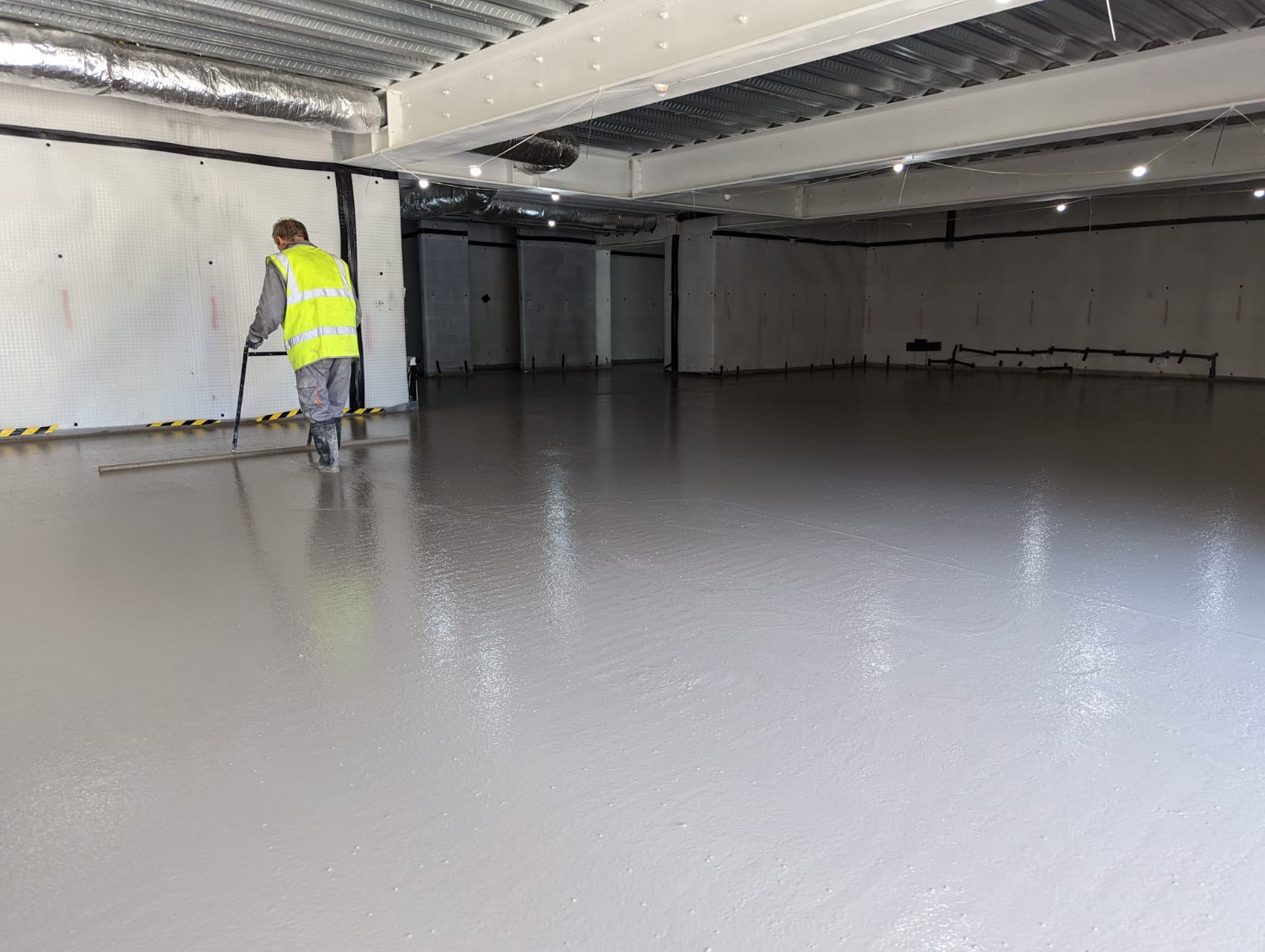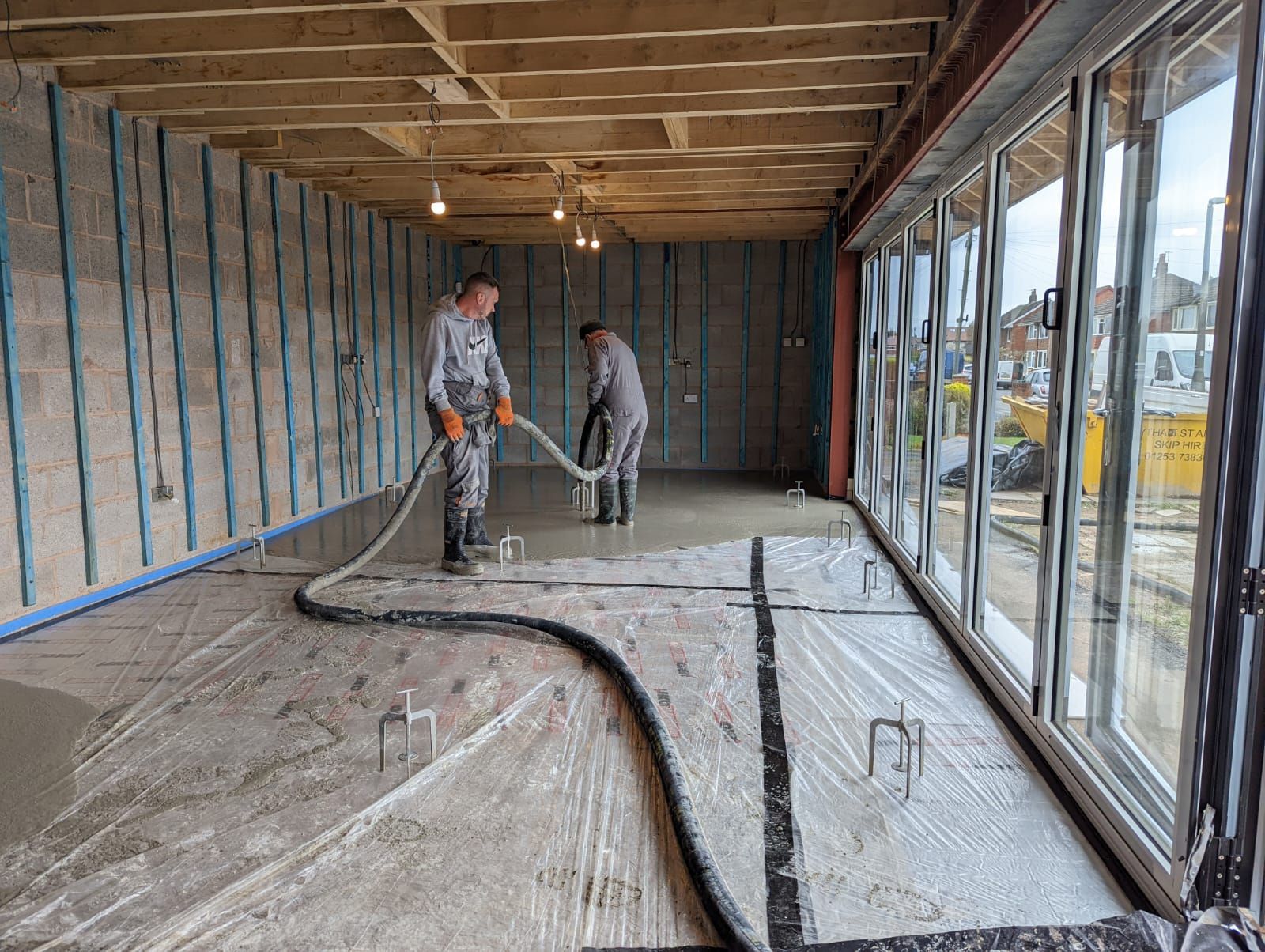Interior floor screeding
Interior floor screeding is an important step in the construction process because it provides a level and robust foundation for the final floor finish to be applied. Cementitious screed, for example, is a popular choice due to its toughness, adaptability, and longevity.
The benefits of interior floor screeding
Interior floor screeding, because of its self-levelling properties, can create a level, smooth surface that complements flooring materials such as tiles, wood flooring, or carpet.
Liquid screed is also less likely to crack than sand and cement screeds.
Interior liquid screed is also quick and simple to install, compared with traditional insulation boards.
Also, because the screed is pumped to the precise location required, you only pay for what you require rather than paying for excess material or a second delivery to make up for a shortfall.

The screeding process
First and foremost, prepare the subfloor surface. The existing floor substrate must be clean, level, and free of dust and debris. Before beginning the screeding process, any irregularities or bumps on the substrate should be levelled or filled. To ensure the finished surface is level, several tripod levelling gauges are placed and adjusted to a consistent depth using a laser.
We batch-produce the screed on-site and pump it directly into the flooring with our fully automated Transmix vans. This reduces build times and associated labour costs by ensuring that we have enough materials for the job and that the customer only pays for what they need.
We dapple the material until it is compact, level, and smooth to make sure there are no bubbles and that the screed is level and smooth. In a single day, we can liquid screed a floor area of about 1,000 m2. Our liquid screed can then accommodate footfall within 24 to 48 hours.
Poured insulation for your interior
Interior floor screeding has a wide range of applications. The use of floor screeding is especially beneficial when combined with underfloor heating. Underfloor heating is popular in the interior design of a home because it provides comfortable and consistent heat while also providing a sleek and unobtrusive heating solution.
Insulation boards were once a popular option, but people have noticed that they take a long time and effort to install, and are inflexible, providing pour insulation in corners and edges, especially if the room is an awkward shape.
Liquid screed has become a popular choice for underfloor heating because it self-compacts, eliminating gaps around corners or pipework, and can be laid as thin as 25mm. As a result, the underfloor heating system's heating effectiveness and reactivity have improved, allowing liquid screed to transport heat consistently throughout a room.
Poured insulation is extremely light, with a density of only 130 kg/m3. It is also environmentally friendly due to its low cement content, which creates less CO2.

Industry experience in screeding
Clockwork Screed are a Stockport-based, family-run interior floor screeding contractor with years of experience in the screeding industry. We install high-performance cementitious liquid screeds for all sizes of construction projects. We can give you expert advice on the best floor screed for your needs and collaborate with other trades on the job site.
Over the years, we have streamlined our floor screeding processes and are committed to operating in a sustainable manner by utilising new technologies that improve our performance.
FAQs
Why is floor screeding necessary?
Floor screeding is necessary for the installation of floor coverings because it provides a level and even surface. It also contributes to the floor's durability and longevity by forming a strong base layer.
Is liquid screed suitable for use as flooring?
Our cementitious liquid floor screed, when polished, can be ideal for a final floor and is especially popular in commercial spaces due to its durability and versatility.
Is poured insulation effective as a sound barrier?
Yes, because poured insulation has a high density, it can absorb vibrations and reduce the amount of sound transmitted through it.
Choose Clockwork Screed for your next Interior floor screeding project
For more information on how Clockwork Screed can help with your construction project,
get in touch.







